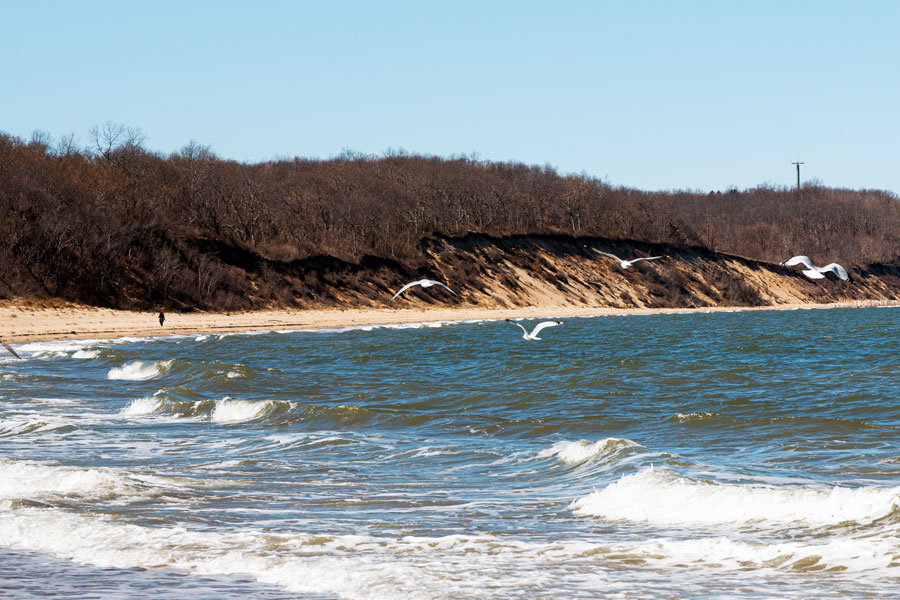Regional Leaders Launch Ambitious 10-Year Plan to Restore Long Island Sound

LONG ISLAND, N.Y. – Officials from New York, Connecticut, and the U.S. Environmental Protection Agency (EPA) unveiled an updated 10-year Comprehensive Conservation Management Plan (CCMP) on Monday, marking the third decade of coordinated efforts to protect and restore the Long Island Sound ecosystem.
The 2025–2035 plan outlines four core objectives: improving water quality and watershed health, expanding habitats and wildlife populations, fostering resilient coastal communities, and increasing public engagement. Key targets include restoring 400 acres of habitat, preserving 2,000 acres of open space, removing at least 100 barriers such as dams and culverts, and establishing 100-foot protective buffers along 75% of the Sound’s waterways.
All 135 Long Island Sound municipalities are expected to submit updated resiliency and watershed management plans under the new framework. The CCMP is intended to address ongoing challenges, such as nutrient and contaminant runoff that recently prompted temporary beach closures across the Sound.
Complementing restoration efforts, Connecticut’s Long Island Sound Blue Plan provides spatial guidance for coastal and marine resource use, ensuring decisions are aligned with ecological objectives.
The funding landscape supports this agenda: local organizations have secured grants targeting on-the-ground improvements. For example, Brookfield, Conn., received $1.5 million through the Long Island Sound Futures Fund to replace failing septic systems for approximately 100 homes, reducing sewage-related nutrient pollution. New York Sea Grant also announced a $6.8 million investment, paired with a $3.6 million match, to support 13 research projects focused on ecosystem and watershed resilience.
The plan launch coincided with a milestone 40th anniversary celebration of the Long Island Sound Partnership, formerly the Long Island Sound Study, reflecting longstanding bipartisan backing at federal, state, and local levels.
Long Island Sound 10-Year Plan: Questions and Answers for Long Island Residents
Q1: What is the 10-year plan for Long Island Sound, and why does it matter to Long Island?
The updated Comprehensive Conservation Management Plan (CCMP) for 2025–2035 outlines goals to improve water quality, restore habitats, enhance coastal resilience, and increase public involvement. For Long Island communities, this means cleaner beaches, stronger storm defenses, and sustained ecological and economic health.
Q2: Which Long Island towns are affected by this plan?
All coastal municipalities along the Sound – including towns like Huntington, Smithtown, Brookhaven, and Oyster Bay – are encouraged to participate by updating local watershed and resiliency plans.
Q3: Will this plan affect Long Island beaches?
Yes. The plan targets improvements in water quality that could reduce the number of beach closures caused by stormwater runoff and bacterial contamination, a recurring issue for Long Island’s North Shore beaches.
Q4: Are there any local Long Island projects included in the new plan?
Several initiatives are in motion, including projects supported by the Long Island Sound Futures Fund and NY Sea Grant. These aim to upgrade failing septic systems, preserve open space, and restore wetlands across Suffolk and Nassau Counties.
Q5: How does the plan address flooding and climate resilience?
Long Island communities are expected to adopt strategies like creating 100-foot natural buffers along streams and shoreline areas, and removing dams and culverts to reduce flood risk and restore natural flow.
Q6: Will this impact Long Island homeowners?
Possibly. Homeowners near sensitive watershed areas may be encouraged or incentivized to upgrade outdated septic systems, plant native buffers, or participate in stormwater mitigation programs. Funding assistance may be available through state or federal grants.
Q7: What role do Long Island residents play?
The plan emphasizes public engagement. Residents can get involved through volunteer cleanup efforts, citizen science programs, educational workshops, and by advocating for clean water policies in their towns.
Q8: How is this being funded?
Funding comes from a mix of federal EPA grants, state initiatives like the Environmental Protection Fund, and local partnerships. Long Island-based programs have already received millions to support research and infrastructure.
Q9: Is this plan different from past conservation efforts?
Yes. While earlier plans focused on specific pollution sources, this one takes a broader view—addressing both land-based and marine threats, including climate resilience, community development, and long-term ecological health.
Q10: Where can I learn more or see how my town is participating?
Updates are available through the Long Island Sound Study website and local town planning boards. Long Island residents can also follow announcements from the New York State Department of Environmental Conservation (DEC) for local involvement opportunities.


